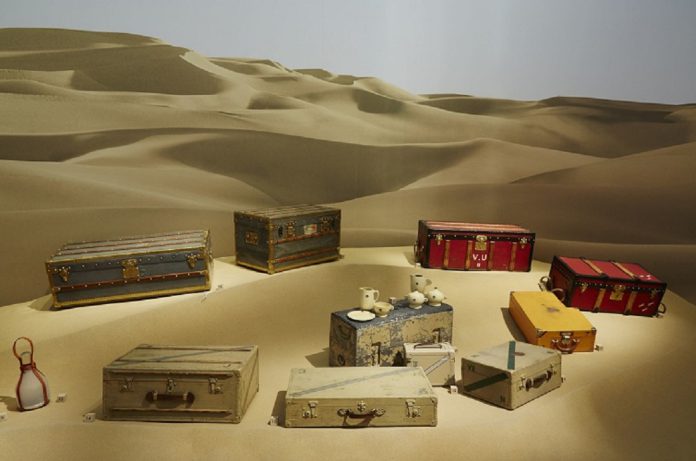L
ouis Vuitton, coming from a family of carpenters- a 14 year old who left his native Jura in eastern France in the direction of Paris, a 280 mile journey that took him two years to complete, is recognized as one of the most prolific creators of high-end purses and handbags. Coming from a family of wood carpenters, he was already extremely familiar with wood, and started as an apprentice box maker and packer in the French capital, before setting up his own business, advertising it as “safely packs the most fragile objects. Specialty packing for fashion.”
Louis was the biggest traveler, everything he invented was to make travel possible. And it wasn’t easy like today. He did it from the beginning to move around more easily.
When Louis started his business, all trunks were special orders that serve demanding customers’ purposes and dreams, with wood central to their manufacture that reproduces the same gestures as 162 years ago: a bespoke wood structure and the application of cement, canvas, lozine, malletage and metal corners and screws. Just like carpentry, they are involved in cutting, fitting, splitting, sharpening and assembling, with poplar used for the barrel, beech for the reinforcement strips, camphor wood for the interior to keep pests away and rosewood for its pleasing fragrance. These protective cases are designed with care to perfectly envelope the contours of their precious contents like a glove with the aim of ensuring the safest journeys, perfectly thought out just for the traveler’s items that they are made to hold. The house still continues this tradition while also commercializing readymade trunks sold in its stores, as it is familiar with the popular shapes and sizes.
“A Vuitton trunk is a must for any traveler wishing to store their clothing safely and conveniently in true elegance,”claimed an advertisement dated June 28, 1924. Thus the trunk is a portrait of the Vuitton brand. Coveted across the globe by the world’s elite, people from all walks of life, flock to designer stores and retailers, all come to purchase his bags, shoes, and other accessories.
Immersed in the exquisite Vuitton archives, ‘Volez, Voguez, Voyagez’ starting from 8th of June and continuing through 27th August exhibits traveling being an art and how trunks and bags continue to reflect our increasingly nomadic lifestyles, from the brand’s beginnings as historic trunk-maker to the modern luxury house it is today.
Curated by Olivier Saillard, it brings forth a fascinating journey of actual objects that were packed in the bags during the time; period costumes, accessories and perfume bottles with a focus on harmony between content and container. The brand closely considered all the new modes of transportation: cruise ships, trains, cars and planes adapting itself to new habits and life experiences with elegance and representing the French art de vivre.
Countless extravagant and ingenious designs representing the dialogue between artists, artisans and clients on the show, the exhibition is divided into 10 chapters, opening with the absolute symbol of Louis Vuitton, an antique malle, and closing with a section dedicated to craftsmanship—a quality the House is well-known for. There is also a chapter devoted to Korea, honouring the historical ties between Louis Vuitton and Korea, designed by Robert Carsen and opening with the most symbolic object for the House: an old trunk, a model fashioned with contemporary flair, presciently embodying the iconic hallmarks and bold spirit of Louis Vuitton
Features Korean musical instruments on loan from the Museum of Music at the Philharmonie de Paris, where donated collections from the 1900 Universal Exhibition in Paris are also on display.





